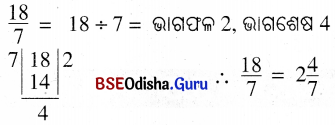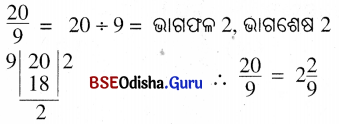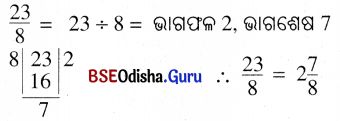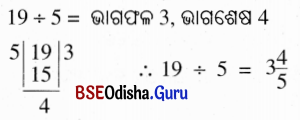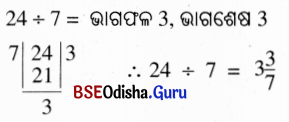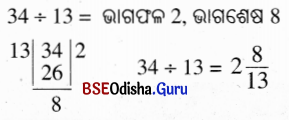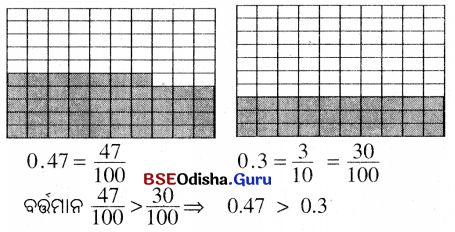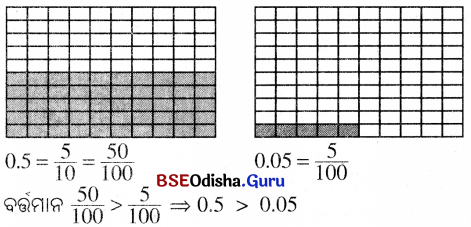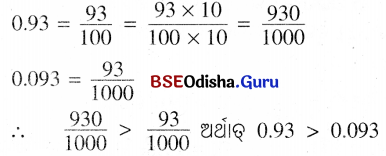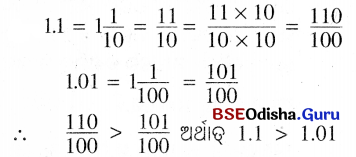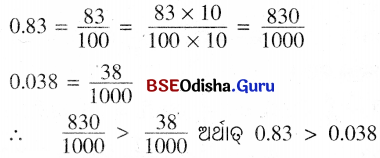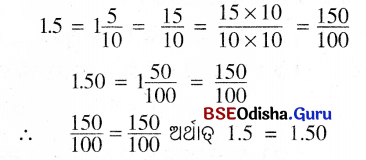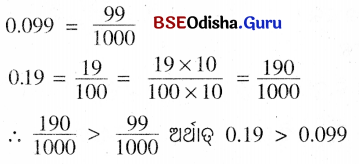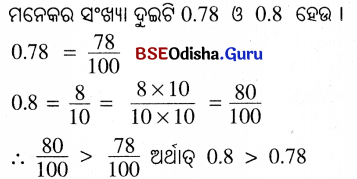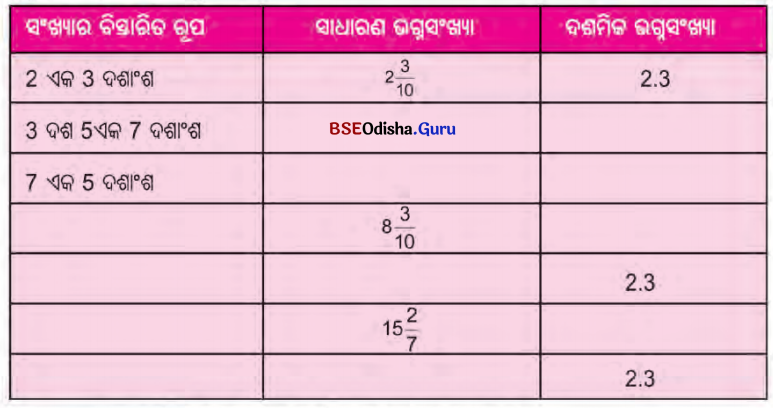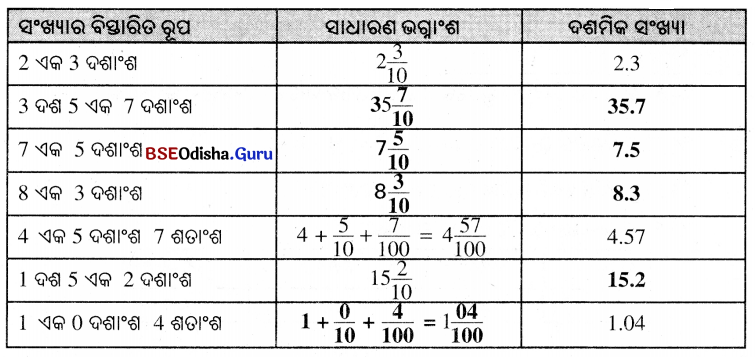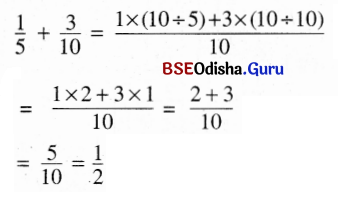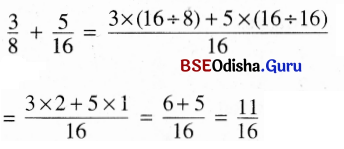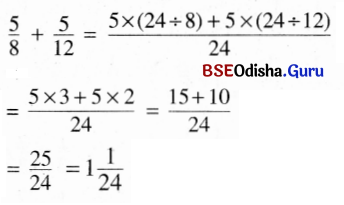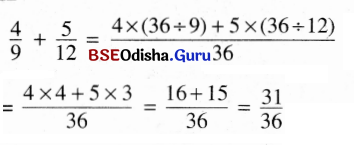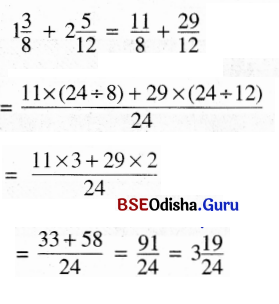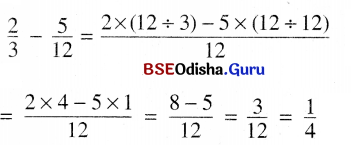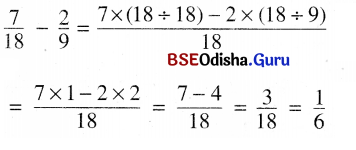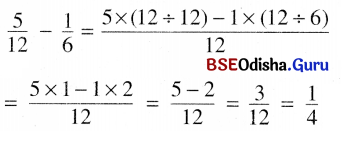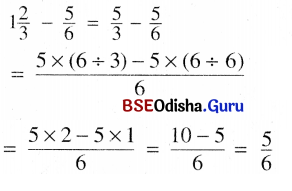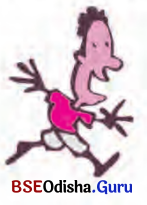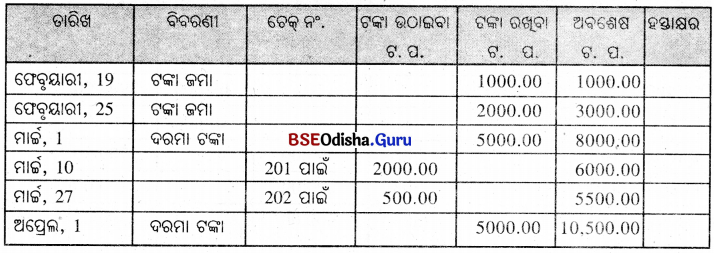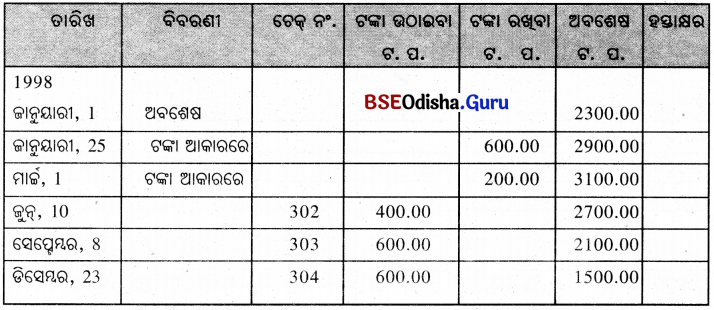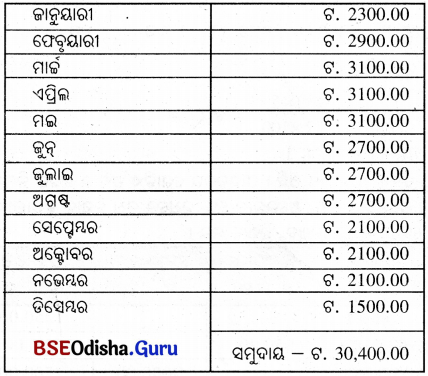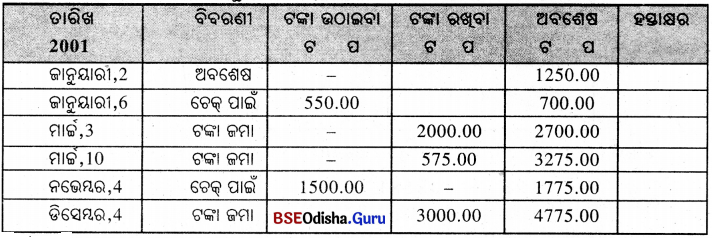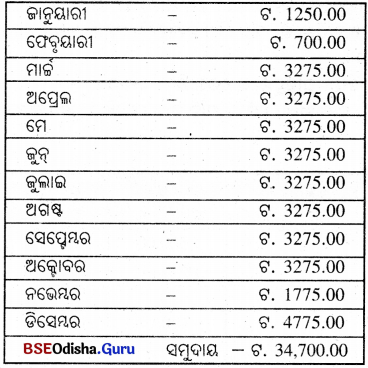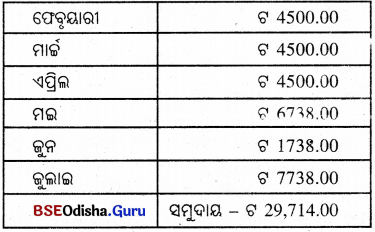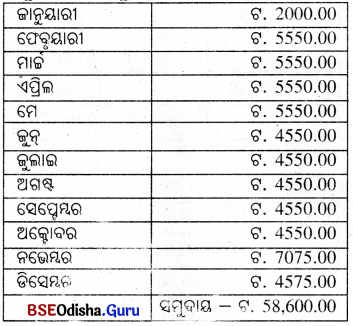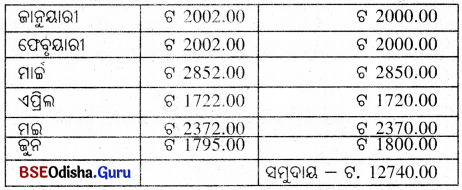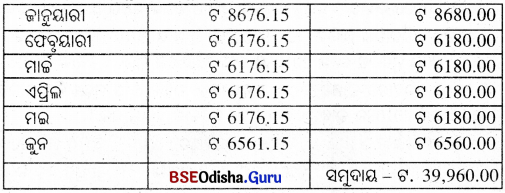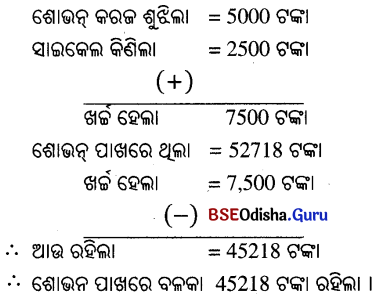Odisha State Board CHSE Odisha Class 12 History Solutions Chapter 8 ଦିଲ୍ଲୀରେ ସୁଲତାନୀ ରାଜତ୍ଵ Objective Questions.
CHSE Odisha 12th Class History Chapter 8 Objective Questions in Odia Medium
ବସ୍ତୁନିଷ୍ଠ ଓ ଅତିସଂକ୍ଷିପ୍ତ ଉତ୍ତରମୂଳକ ପ୍ରଶ୍ନୋତ୍ତର
A. ସମ୍ଭାବ୍ୟ ଚାରୋଟି ଉତ୍ତର ମଧ୍ୟରୁ ଠିକ୍ ଉତ୍ତରଟି ବାଛି ଲେଖ ।
୧। ଦିଲ୍ଲୀର ସୁଲତାନୀ ରାଜ୍ୟ ଥିଲା-
(କ) ଧର୍ମକୈନ୍ଦ୍ରିକ
(ଖ) ଏକଚ୍ଛତ୍ରବାଦୀ
(ଗ) ଗୋଷ୍ଠୀତନ୍ତ୍ର
(ଘ) ଗଣତାନ୍ତ୍ରକ
Answer:
(କ) ଧର୍ମକୈନ୍ଦ୍ରିକ
୨ । ସୁଲତାନମାନେ ଥିଲେ କାହାର ପ୍ରତିନିଧି ଥିଲେ ?
(କ) ମହାପୁରୁଷ ମହମ୍ମଦ
(ଖ) ଇସ୍ଲାମ ଧର୍ମ
(ଗ) ଖଲିଫାଙ୍କ
(ଘ) ମୁସଲମାନମାନଙ୍କ
Answer:
(ଗ) ଖଲିଫାଙ୍କ

୩ । ସୁଲତାନଙ୍କ କର୍ତ୍ତୃତ୍ୱ ବା କ୍ଷମତା କାହା ଉପରେ ନିର୍ଭର କରୁଥିଲା ?
(କ) ଖଲିଫାଙ୍କ ସମର୍ଥନ
(ଖ) ମୁସଲମାନମାନଙ୍କର ସମର୍ଥନ
(ଗ) ଉଲେମାମାନଙ୍କ ସ୍ଵୀକୃତି
(ଘ) ସାମରିକ ଶକ୍ତି
Answer:
(ଘ) ସାମରିକ ଶକ୍ତି
୪ । କେଉଁ ନୀତି ଅନୁସାରେ ସୁଲତାନମାନେ ରାଜ୍ୟ ଶାସନ କରୁଥିଲେ ?
(କ) ଶାରିଆତ୍
(ଖ) ମୁସଲମାନମାନଙ୍କର ନିଷ୍ପତ୍ତି
(ଗ) ଖଲିଫାଙ୍କ ଆଦେଶ
(ଘ) ଉଲେମାମାନଙ୍କ ନିଷ୍ପତ୍ତି
Answer:
(କ) ଶାରିଆତ୍
୫ । ଇସଲାମ୍ ଧର୍ମର ନୀତି ଅନୁଯାୟୀ କିଏ ଇସଲାମ୍ ଜଗତର ରାଜନୈତିକ ଓ ଧର୍ମୀୟ ମୁଖ୍ୟ ଥିଲେ ?
(କ) ପୋପ୍
(ଖ) ଖଲିଫା
(ଗ) ଓ୍ୱାଜିର
(ଘ) ଦିୱାନ
Answer:
(ଖ) ଖଲିଫ
୬ । ଦିଲ୍ଲୀର ସୁଲତାନ କି ପ୍ରକାର ଶାସନ ପ୍ରତିଷ୍ଠା କରିଥିଲେ ?
(କ) ନିରଙ୍କୁଶ ଏକଚ୍ଛତ୍ର ଶାସନ
(ଖ) ଧର୍ମଭିତ୍ତିକ ଶାସନ
(ଗ) ଉଦାର ଶାସନ
(ଘ) ଗଣତାନ୍ତ୍ରକ ଶାସନ
Answer:
(କ) ନିରଙ୍କୁଶ ଏକଚ୍ଛତ୍ର ଶାସନ
୭। ସୁଲତାନୀ ଶାସନରେ ପ୍ରଧାନମନ୍ତ୍ରୀଙ୍କୁ କ’ଣ କୁହାଯାଉଥିଲା ?
(କ) ୱାଜିର
(ଖ) ନାଏବ – ଜିର
(ଗ) ଆରିଜ-ଇ-ମମଲିକ
(ଘ)ଦିୱାନ୍-ଇ-ଇନ୍ସା
Answer:
(କ) ୱାଜିର୍

୮ । ରାଜକୀୟ ପତ୍ର ଆଦାନ ପ୍ରଦାନ ଦାୟିତ୍ଵରେ ଥିବା ମନ୍ତ୍ରୀଙ୍କୁ କ’ଣ କୁହାଯାଉଥିଲା ?
(କ) ୱାଜିର
(ଖ) ନାଏବ – ୱାଜିର
(ଗ) ବରିଦ୍-ଇ-ମମଲିକ୍
(ଘ)ଦିୱାନ୍-ଇ-ଇନ୍ସା
Answer:
(ଗ) ବରିଦ୍-ଇ-ମମଲିକ୍
୯ । ଧର୍ମ ସମ୍ବନ୍ଧୀୟ ଏକ ଦାତବ୍ୟ କାର୍ଯ୍ୟ ପରିଚାଳନା କରୁଥିବା ମନ୍ତ୍ରୀଙ୍କୁ କ’ଣ କୁହାଯାଉଥିଲା ?
(କ) ଦିୱାନ-ଇ-କ୍ୱାଜା
(ଖ) ସଦ୍-ଉସ୍-ସଦର
(ଗ) ଆରିଜ-ଇ-ମମଲିକ
(ଘ) ବରିଦ୍-ଇ-ମମଲିକ
Answer:
(ଖ) ସଦର-ଉସ୍- ସଦର
୧୦ । ସୁଲତାନୀ ଶାସନରେ ସାମରିକ ବିଭାଗର ମନ୍ତ୍ରୀଙ୍କୁ କ’ଣ କୁହାଯାଉଥିଲା ?
(କ) ଆରିଜ୍-ଇ-ମମଲିକ
(ଖ) ୱାଜିର
(ଗ) ଦିୱାନ-ଇ-କ୍ୱାଜା
(ଘ) ସଦର-ଉସ୍- ସଦର
Answer:
(କ) ଆରିଜ୍-ଇ-ମମଲିକ
୧୧ । ସୁଲତାନୀ ଶାସନରେ କୃଷି ବିଭାଗର ମନ୍ତ୍ରୀଙ୍କୁ କ’ଣ କୁହାଯାଉଥିଲା ?
(କ) ଦିୱାନ-ଇ-କ୍ୱାଜା
(ଖ) ଅମୀର-ଇ-କୋହି
(ଗ) ଅମୀର-ଇ-ଶୀକାର
(ଘ) ଓକିଲ-ଇ-ଦର୍
Answer:
(ଖ) ଅମୀର-ଇ-କୋହି
୧୨ । ପ୍ରତିରକ୍ଷା ଦାୟିତ୍ଵରେ ଥିବା ମନ୍ତ୍ରୀଙ୍କ ବିଭାଗକୁ କ’ଣ କୁହାଯାଉଥିଲା ?
(କ) ଦିୱାନ-ଇ-ଅରିଜ୍
(ଖ) ଦିୱାନ୍-ଇ-ଇନ୍ସା
(ଗ) ଦିୱାନ୍-ଇ-ରସାୟତ୍
(ଘ) ଦିୱାନ-ଇ-ୱାଜରତ
Answer:
(କ) ଦିୱାନ-ଇ-ଅରିଜ୍

୧୩ । ସୁଲତାନୀ ଶାସନରେ ରାଜପରିବାରର ଦାୟିତ୍ଵରେ କିଏ ରହିଥିଲେ ?
(କ) ଦିୱାନ-ଇ-ମମଲିକ୍
(ଖ) ଓକିଲ-ଇ-ଦର୍
(ଗ) ବରିଦ୍-ଇ-ମମଲିକ୍
(ଘ) ଦିୱାନ୍-ଇ-ଇନ୍ସା
Answer:
(ଖ) ଓକିଲ-ଇ-ଦର୍
୧୪ । ସୁଲତାନୀ ଶାସନରେ ଜିଲ୍ଲାର ଶାସନ ଦାୟିତ୍ଵ କାହା ଉପରେ ନ୍ୟସ୍ତ ଥୁଲା ?
(କ) ସିଦାର
(ଖ) ଅମୀର
(ଗ) କାନୁନ୍ଗୋ
(ଘ) ନାଜିର
Answer:
(କ) ସିଦାର
୧୫ । ଅଣମୁସଲମାନମାନଙ୍କ ଉପରେ ଲାଗୁ କରାଯାଇଥିବା ଧର୍ମ କରକୁ କ’ଣ କୁହାଯାଉଥିଲା ?
(କ) ଜାକତ୍
(ଖ) ଜିଜିୟା
(ଗ) ଉଶର୍
(ଘ) ଖାରଜ୍
Answer:
(ଖ) ଜିଜିୟା
୧୬ । ଧନୀ ମୁସଲମାନମାନଙ୍କଠାରୁ ଆଦାୟ କରାଯାଉଥିବା କରକୁ କ’ଣ କୁହାଯାଉଥିଲା ?
(କ) ଉଶର
(ଖ) ଖାରଜ
(ଗ) ଖାମ
(ଘ) ଜାକତ୍
Answer:
(କ) ଉଶର
୧୭ । ଅଣମୁସଲମାନମାନଙ୍କଠାରୁ ଆଦାୟ ହେଉଥିବା ଭୂମି କରକୁ କ’ଣ କୁହାଯାଉଥିଲା ?
(କ) ଖାମ
(ଖ) ଖାରଜ
(ଗ) ଜାକତ୍
(ଘ) ଜିଜିୟା
Answer:
(ଖ) ଖାରଜ
୧୮ । ସୁଲତାନୀ ଶାସନରେ ପ୍ରାଦେଶିକ ଶାସନକର୍ତ୍ତାଙ୍କୁ କ’ଣ କୁହାଯାଉଥିଲା ?
(କ) ଜିର
(ଖ) ଅମୀର
(ଗ) ୱାଲି
(ଘ) କାନୁନ୍ଗୋ
Answer:
(ଗ) ୱାଲି
୧୯ । କିଏ ‘ବନ୍ଦେଗାନ୍-ଇ-ଚିହିଲଗାନ୍’ (୪୦ ଜଣ ସଦସ୍ୟ ପରିଷଦ) ଗଠନ କରିଥିଲେ ?
(କ) ବଲ୍ବନ୍
(ଖ) ଆଲ୍ଲାଉଦ୍ଦିନ ଖୁଲ୍
(ଗ) ଇଲ୍ଡ୍ମିସ୍
(ଘ) କୁତବୁଦ୍ଦିନ ଆଇବାକ୍
Answer:
(ଗ) ଇଲ୍ଡ୍ମିସ୍

୨୦ । କିଏ ‘ସ୍ୱର୍ଗୀୟ ରାଜତାନ୍ତ୍ରିକ ତତ୍ତ୍ୱ’ରେ ବିଶ୍ଵାସ କରୁଥିଲେ ?
(କ) ଇମିସ୍
(ଖ) ଆଲ୍ଲାଉଦ୍ଦିନ୍ ଖୁଲ୍
(ଗ) ବଲବନ୍
(ଘ) କୁତବୁଦ୍ଦିନ ଆଇବାକ୍
Answer:
(ଗ) ବଲବନ୍
୨୧ । କିଏ ‘ସିଦା’ ଏବଂ ‘ପାଇବସ୍’ ନୀତି ପ୍ରଚଳନ କରିଥିଲେ ?
(କ) ଗିୟାସୁଦ୍ଦିନ ବଲ୍ବନ୍
(ଖ) ଆଲ୍ଲାଉଦ୍ଦିନ୍ ଖୁଲ୍
(ଗ) ଇଲ୍ତୁତ୍ମିସ୍
(ଘ) କୁତବୁଦ୍ଦିନ୍ ଆଇବାକ୍
Answer:
(କ) ଗିୟାସୁଦ୍ଦିନ୍ ବଲ୍ବନ୍
୨୨ । ‘ଜିର୍’ କାହାକୁ କୁହାଯାଉଥିଲା ?
(କ) ପ୍ରଧାନମନ୍ତ୍ରୀ
(ଖ) ମୁଖ୍ୟମନ୍ତ୍ରୀ
(ଗ) ସେନାପତି
(ଘ) ଦୁତ
Answer:
(କ)ପ୍ରଧାନମନ୍ତ୍ରୀ
୨୩ । ‘ଦିୱାନ୍-ଇ-ଇନ୍ସା’ କିଏ ଥିଲେ ?
(କ) ଚିଠିପତ୍ର ଦାୟିତ୍ଵରେ ଥିବା ମନ୍ତ୍ରୀ
(ଖ) କୋଷାକ୍ଷ
(ଗ) ବୈଦେଶିକ ମନ୍ତ୍ରୀ
(ଘ) ପ୍ରଧାନମନ୍ତ୍ର
Answer:
(କ) ଚିଠିପତ୍ର ଦାୟିତ୍ଵରେ ଥିବା ମନ୍ତ୍ରୀ
୨୪ । ଖବର ସରବରାହ ସଂସ୍ଥାର ମୁଖ୍ୟଙ୍କୁ କ’ଣ କୁହାଯାଉଥିଲା ?
(କ) ଦିୱାନ୍-ଇ-ରିୟାସତ୍
(ଖ) ଦିୱାନ୍-ଇ-ଇନ୍ସା
(ଗ) ବରିଦ୍-ଇ-ମମଲିକ୍
(ଘ) କାଜି -ଉଲ୍- କାଜତ୍
Answer:
(ଗ) ବରିଦ୍-ଇ-ମମଲିକ୍

୨୫ । ଅମୀର-ଇ-କୋହି କେଉଁ ମନ୍ତ୍ରୀଙ୍କୁ କୁହାଯାଉଥିଲା ?
(କ) କୃଷି ବିଭାଗ ମନ୍ତ୍ରୀ
(ଖ) ନିର୍ମାଣ ବିଭାଗ ମନ୍ତ୍ରୀ
(ଗ) ଶିକାର ବିଭାଗ ମନ୍ତ୍ରୀ
(ଘ) ବୈଦେଶିକ ମନ୍ତ୍ରୀ
Answer:
(କ)କୃଷି ବିଭାଗ ମନ୍ତ୍ରୀ
୨୬ । ମୁସଲମାନ ସମାଜର ଆଭିଜାତ୍ୟ ଶ୍ରେଣୀର ଲୋକମାନଙ୍କୁ କ’ଣ କୁହାଯାଉଥିଲା ?
(କ) ଉମାର୍
(ଖ) ଖଲକ୍
(ଗ) ଆୱାମ୍
(ଘ) ଉଲେମା
Answer:
(କ) ଉମାର୍
୨୭ । ଦିଲ୍ଲୀର କେଉଁ ସୁଲତାନ୍ ବଜାର ନିୟନ୍ତ୍ରଣ ବ୍ୟବସ୍ଥା ପ୍ରଚଳନ କରିଥିଲେ ?
(କ) ଆଲ୍ଲାଉଦ୍ଦିନ୍ ଖୁଲ୍ଜୀ
(ଖ) ଫିରୋଜଶାହା ତୋଗଲକ
(ଗ) ମହମ୍ମଦ ବିନ୍ ତୋଗଲକ
(ଘ) ଇବ୍ରାହିମ୍ ଲୋଦୀ
Answer:
(କ) ଆଲ୍ଲାଉଦ୍ଦିନ୍ ଖୁଲ୍ଜୀ
୨୮ । ଉଲେମା କାହାକୁ କୁହାଯାଉଥିଲା ?
(କ) ମୁସଲମାନ ଧର୍ମତତ୍ତ୍ଵବିଦ୍
(ଖ) ରାଜସ୍ୱ ବିଭାଗ ମନ୍ତ୍ରୀ
(ଗ) ସାମରିକ ବିଭାଗ ମନ୍ତ୍ରୀ
(ଘ) ପ୍ରଧାନମନ୍ତ୍ରୀ
Answer:
(କ) ମୁସଲମାନ ଧର୍ମତତ୍ତ୍ଵବିଦ୍
୨୯ । ଇସ୍ଲାମୀୟ ଜଗତରେ କିଏ ମୁଖ୍ୟ ବୋଲି ବିଚାର କରାଯାଉଥୁଲା ?
(କ) ଖଲିଫା
(ଖ) ଉଲେମା
(ଗ) ସୁଲତାନ୍
(ଘ) ଅମୀର୍
Answer:
(କ)ଖଲିଫା

୩୦ । ଶାରିଆଡ୍ କହିଲେ କ’ଣ ବୁଝ ?
(କ) ମୁଖ୍ୟ ବିଚାର ବିଭାଗୀୟ କର୍ମଚାରୀ
(ଖ) ଏକପ୍ରକାର କର
(ଗ) ଇସ୍ଲାମୀୟ ଆଇନ
(ଘ) ଦଣ୍ଡ ବ୍ୟବସ୍ଥା
Answer:
(ଗ) ଇସ୍ଲାମୀୟ ଆଇନ
୩୧ । ସୁଲତାନୀ ଶାସନ ସମୟରେ ଗ୍ରାମରେ କିଏ ଆୟବ୍ୟୟର ହିସାବ ରଖୁଥିଲେ ?
(କ) ପଟୱାରୀ
(ଖ) ଅମୀର୍
(ଗ) ଚୌଧୁରୀ
(ଘ) କିରାଣୀ
Answer:
(କ) ପଟୱାରୀ
୩୨ । ‘ଜାକତ୍’ କହିଲେ କ’ଣ ବୁଝାଯାଏ ?
(କ) ସୁଲତାନୀ ରାଜତ୍ଵର ରାଜସ୍ଵ କର୍ମଚାରୀ
(ଖ) ସୁଲତାନୀ ରାଜତ୍ଵ ସମୟରେ ଏକ ଧର୍ମୀୟ କର
(ଗ) ସୁଲତାନୀ ରାଜତ୍ଵ ସମୟରେ କେତେକ ଗ୍ରାମ
(ଘ) ସୁଲତାନୀ ରାଜତ୍ଵ ସମୟରେ ଦଣ୍ଡ ବ୍ୟବସ୍ଥା
Answer:
(ଖ) ସୁଲତାନୀ ରାଜତ୍ଵ ସମୟରେ ଏକ ଧର୍ମୀୟ କର
୩୩ । ସୁଲତାନ୍ ସାମ୍ରାଜ୍ୟର ଗୁରୁତ୍ଵପୂର୍ଣ୍ଣ ବ୍ୟାପାରରେ ନିମ୍ନୋକ୍ତ କେଉଁ ରାଜସଭା ସହିତ ପରାମର୍ଶ କରୁଥିଲେ ?
(କ) ମଜୁଲିସ୍ -ଇ-ଖଲ୍ୱାତ୍
(ଖ) କାଜିରଲ୍ ଜାକତ୍
(ଗ) ବିରିଦ୍-ଇ-ମମଲିକ୍
(ଘ) ଓକିଲ-ଇ-ଦର
Answer:
(କ) ମଜୁଲିସ୍ -ଇ-ଖଲ୍ୱାତ୍
୩୪ । ଜିତଲ୍ କହିଲେ କ’ଣ ବୁଝ ?
(କ) ସୁଲତାନୀ ଯୁଗର ଏକ ତାମ୍ରମୁଦ୍ରା
(ଖ) ସୁଲତାନୀ ଯୁଗର ଏକପ୍ରକାର କର
(ଗ) ସୁଲତାନୀ ଯୁଗର ବ୍ୟବସାୟସ୍ଥଳୀ
(ଘ) ସୁଲତାନୀ ଯୁଗର ମନ୍ତ୍ରୀମଣ୍ଡଳ
Answer:
(କ) ସୁଲତାନୀ ଯୁଗର ଏକ ତାମ୍ରମୁଦ୍ରା

୩୫ । ଦିଲ୍ଲୀର ସୁଲତାନଙ୍କ ମଧ୍ୟରୁ କିଏ ସୈନ୍ୟବାହିନୀର ସାଂଗଠନିକ ଓ କାର୍ଯ୍ୟଦକ୍ଷତା ଉପରେ ଅଧିକ ଗୁରୁତ୍ଵ ଦେଇଥିଲେ ?
(କ) ଆଲ୍ଲାଉଦ୍ଦିନ୍ ଖୁଲ୍ଜୀ
(ଖ) ମହମ୍ମଦ ବିନ୍ ତୋଗଲୋକ
(ଗ) ଇଲ୍ତୁଡ୍ମିସ୍
(ଘ) ଫିରୋଜଶାହା ତୋଗଲୋକ
Answer:
(କ)ଆଲ୍ଲାଉଦ୍ଦିନ୍ ଖୁଲ୍ଜୀ
୩୬ । ସୁଲତାନୀ ରାଜତ୍ଵରେ ନିମ୍ନୋକ୍ତ କେଉଁ କର୍ମଚାରୀ ମାଜିଷ୍ଟ୍ରେଟଙ୍କ କାର୍ଯ୍ୟ ସମ୍ପାଦନ କରୁଥିଲେ ?
(କ) ଆରିଜ୍ -ଇ-ମମଲିକ୍
(ଖ) ଅମୀର-ଇ-କୋହି
(ଗ) ଅମୀର-ଇ-ଦାଦ୍
(ଘ) ଦିୱାନ୍-ଇ-କ୍ୱାଜା
Answer:
(ଗ) ଅମୀର-ଇ-ଦାଦ୍
୩୭ । ନିମ୍ନୋକ୍ତ କେଉଁ ସୁଲତାନ୍ ସାମ୍ରାଜ୍ୟରୁ ଅଙ୍ଗଚ୍ଛେଦନ ବ୍ୟବସ୍ଥା ଉଠାଇ ଦେଇଥିଲେ ?
(କ) ଇମିସ୍
(ଖ) ଆଲ୍ଲାଉଦ୍ଦିନ୍ ଖୁଲ୍
(ଗ) ବଲ୍ବନ୍
(ଘ) ଫିରୋଜଶାହା ତୋଗଲୋକ
Answer:
(ଘ) ଫିରୋଜଶାହା ତୋଗଲୋକ
୩୮ । ନିମ୍ନୋକ୍ତ କେଉଁ ସୁଲତାନ ପ୍ରଥମେ ଭାରତୀୟ ମୁସଲମାନମାନଙ୍କୁ ଶାସନର ବିଭିନ୍ନ କ୍ଷେତ୍ରରେ ନିଯୁକ୍ତି ଦେଉଥିଲେ ?
(କ) ଇଲ୍ତୁଡ୍ମିସ୍
(ଖ) ବଲ୍ବନ୍
(ଗ) ଆଲ୍ଲାଉଦ୍ଦିନ୍ ଖୁଲ୍
(ଘ)ଗିୟାସୁଦ୍ଦିନ୍ ଭୋଗଲୋକ
Answer:
(ଗ) ଆଲ୍ଲାଉଦ୍ଦିନ୍ ଖୁଲ୍
୩୯ । ନିମ୍ନୋକ୍ତ କେଉଁ ସୁଲତାନଙ୍କ ସମୟରେ ବିଦେଶୀ ମୁସଲମାନମାନେ ଶାସନକ୍ଷେତ୍ରରେ ଅଧିକ ନିଯୁକ୍ତି ପାଇଥିଲେ ?
(କ) ମହମ୍ମଦ ତୋଗଲୋକ
(ଖ) ଗିୟାସୁଦ୍ଦିନ୍ ଭୋଗଲୋକ
(ଗ) ଫିରୋଜଶାହା ତୋଗଲୋକ
(ଘ) ଆଲ୍ଲାଉଦ୍ଦିନ୍ ଖୁଲ୍
Answer:
(କ) ମହମ୍ମଦ ତୋଗଲୋକ

୪୦ । ସୁଲତାନୀ ରାଜତ୍ଵ କାଳରେ ହିନ୍ଦୁ ସମାଜ ନିମ୍ନୋକ୍ତ କେଉଁ ପ୍ରଥା ଉପରେ ପ୍ରତିଷ୍ଠିତ ଥୁଲା ?
(କ) ବାଲ୍ୟବିବାହ ପ୍ରଥା
(ଖ) ନରବଳୀ ପ୍ରଥା
(ଗ) ଜାତିପ୍ରଥା
(ଘ) ବିଧବା ବିବାହ ପ୍ରଥା
Answer:
(ଗ) ଜାତିପ୍ରଥା
B. ଶୂନ୍ୟସ୍ଥାନ ପୂରଣ କର ।
୧। ସୁଲତାନୀ ଯୁଗରେ ସହରର ଲୋକମାନଙ୍କର ନୈତିକ ଚରିତ୍ର ଓ ବଜାର ନିୟନ୍ତ୍ରଣ କରୁଥିବା କର୍ମଚାରୀଙ୍କୁ _________ କୁହାଯାଉଥିଲା ।
Answer:
ମୋହତାସିବ୍
୨ । ମୁସଲମାନ ଓ ଅଣମୁସଲମାନଙ୍କ ମଧ୍ୟରେ ଯେଉଁ ଧର୍ମଯୁଦ୍ଧ ହୋଇଥିଲା ତାକୁ __________ କୁହାଯାଉଥ୍ଲା ।
Answer:
ଜିହାଦ୍
୩ । _________ ଥିଲେ ଆଫ୍ରିକାରୁ ଆସିଥିବା ପର୍ଯ୍ୟଟକ ଯିଏ ୧୩୩୪ରୁ ୧୩୪୨ ଖ୍ରୀ.ଅ. ପର୍ଯ୍ୟନ୍ତ ଭାରତ ପରିଭ୍ରମଣ କରିଥିଲେ ।
Answer:
ଇବନ ବହୁତା
୪ । __________ ଥିଲେ ପର୍ତ୍ତୁଗୀଜ୍ ପରିବ୍ରାଜକ ଯିଏ ୧୫୦୦ରୁ ୧୫୧୨ ମସିହା ପର୍ଯ୍ୟନ୍ତ ଭାରତ ପରିଭ୍ରମଣ କରିଥିଲେ ।
Answer:
ଦୁଆରତେ ବରଦୋସା

୫ । ତ୍ରୟୋଦଶ ଶତାବ୍ଦୀର ଶେଷ ଦଶନ୍ଧିରେ ଦକ୍ଷିଣ ଭାରତ ପରିଭ୍ରମଣ କରିଥିବା ଇଉରୋପୀୟ ପର୍ଯ୍ୟଟକ ଥିଲେ ________।
Answer:
ମାର୍କୋପୋଲୋ
୬ । ସୁଲତାନୀ ଯୁଗର ମୁସଲମାନ ପ୍ରଜାମାନେ ନିଜ ଜମି ପାଇଁ __________ ନାମକ ଭୂରାଜସ୍ଵ ସରକାରଙ୍କୁ ଦେଉଥିଲେ ।
Answer:
ଉସର
୭। ଜିଆଉଦ୍ଦିନ୍ ବାରାନୀ ଜଣେ ____________ ।
Answer:
ଐତିହାସିକ
୮ | ___________ ଦିଲ୍ଲୀରୁ ଦୌଲତାବାଦକୁ ରାଜଧାନୀ ସ୍ଥାନାଧି ର କରିଥିଲେ ।
Answer:
ମହମ୍ମଦ ବିନ୍ ତୋଗଲକ
୯ । ସୁଲତାନ୍ __________ ବିଖ୍ୟାତ କୁତବ୍ମିନାର କାମ ଆରମ୍ଭ କରିଥିଲେ ।
Answer:
କୁତବୁଦ୍ଦିନ୍ ଆଇବାକ୍
୧୦ । ସୁଲତାନ୍ __________ ବିଖ୍ୟାତ କୁତବ୍ମିନାର୍ର ନିର୍ମାଣ ସମ୍ପୂର୍ଣ୍ଣ କରିଥିଲେ ।
Answer:
ଇଡ୍ମିସ୍
୧୧। __________ ପ୍ରତିମା ପୂଜା ପ୍ରତି ଏପରି ଅସହିଷ୍ଣୁ ହୋଇଥିଲେ ଯେ ହିନ୍ଦୁ ମନ୍ଦିର ଭାଙ୍ଗିଦେବା ପାଇଁ ଆଦେଶ ଦେଇଥିଲେ ।
Answer:
ସିକନ୍ଦର ଲୋଦୀ

୧୨ । __________ ଙ୍କ ସମୟରେ ବ୍ରାହ୍ମଣମାନଙ୍କ ଉପରେ ଜିଜିୟା କର ଲାଗୁ ହୋଇଥିଲା ।
Answer:
ଫିରୋଜଶାହା ତୋଗଲକ
୧୩ । ଖଲିଫାଙ୍କ ନାମରେ ____________ ପାଠ କରାଯାଉଥିଲା ।
Answer:
ଖୁଡ଼ିବା
୧୪ । ୱାଜିର୍ଙ୍କ କାର୍ଯ୍ୟାଳୟକୁ ____________ କୁହାଯାଉଥ୍ଲା ।
Answer:
ଦିୱାନ୍-ଇ-ୱାଜରତ୍
୧୫ । ସୁଲତାନୀ ରାଜତ୍ଵ କାଳରେ __________ ମାନେ ନାଏବ୍, ୱାଲି ବା ମୁକ୍ତି ନାମରେ ପରିଚିତ ହେଉଥିଲେ ।
Answer:
ଗଭର୍ଣ୍ଣର
୧୬ । ବହିର୍ଦେଶ ସହିତ କୂଟନୀତିକ ସମ୍ପର୍କ ସ୍ଥାପନ କରିବା __________ ଙ୍କ କାର୍ଯ୍ୟ ଥିଲା ।
Answer:
ଦିୱାନ୍-ଇ- ରସାଲତ୍
୧୭ । ଦଶଜଣ ଅଶ୍ୱାରୋହୀ ସୈନିକଙ୍କ ମୁଖ୍ୟ ________ ଥିଲେ ।
Answer:
ସର-ଇ-ଖିଲ୍
୧୮ । ବିଚାର ବିଭାଗକୁ ________ ନାମରେ ଅଭିହିତ କରାଯାଇଥିଲା ।
Answer:
ଦିୱାନ୍-ଇ-କ୍ସାଜା

୧୯ । ମୁସଲିମ୍ ଆଇନ ଅନୁଯାୟୀ __________ କର ଦେଉ ନଥିବା ବ୍ୟକ୍ତିଙ୍କର ମୁସଲମାନ ସାମ୍ରାଜ୍ୟ ମଧ୍ୟରେ ବାସ କରିବାର ଅଧ୍ୟାର ନଥାଏ ।
Answer:
ଜିଜିୟା
୨୦ । ମୁସ୍ଲିମ୍ ନୀତି ଅନୁଯାୟୀ ମୁସଲମାନମାନଙ୍କର କେବଳ ମାତ୍ର ଜଣେ ଶାସକ ଥାଆନ୍ତି ଏବଂ ସେ ହେଉଛନ୍ତି __________ ।
Answer:
ଖଲିଫା
୨୧। _________ ‘ନିଷ୍ଠାପର ବ୍ୟକ୍ତିମାନଙ୍କର ନେତା’ ରୂପେ ଜଣାଶୁଣା ଥିଲେ ।
Answer:
ଖଲିଫା
୨୨ । ସୁଲତାନ୍ଙ୍କ ରାଜ୍ୟ _________ ର ନିର୍ଦେଶ ଅନୁଯାୟୀ ପରିଚାଳିତ ହେଉଥିଲା ।
Answer:
ଶାରୀଆତ୍
୨୩ । ସୁଲତାନଙ୍କ ସାମ୍ରାଜ୍ୟ __________ ଶକ୍ତି ଉପରେ ପ୍ରତିଷ୍ଠିତ ଥିଲା ।
Answer:
ସାମରିକ
୨୪ । ସୁଲତାନ୍ ରାଜଧାନୀରେ ଅନୁପସ୍ଥିତ ଥିବା ସମୟରେ ____________ ଶାସନକାର୍ଯ୍ୟ ପରିଚାଳନା କରୁଥିଲେ ।
Answer:
ନାଏବ୍
୨୫ । ଆରିଜ୍-ଇ-ମମଲିକ୍ __________ ବିଭାଗର ମନ୍ତ୍ରୀ ଥିଲେ ।
Answer:
ସାମରିକ
୨୬ । ପଦାତିକ ସୈନ୍ୟଙ୍କୁ ________ କୁହାଯାଉଥ୍ଲା ।
Answer:
ପାୟକ

୨୭ । ___________ ପ୍ରାଦେଶିକ ସ୍ତରରେ ମକଦ୍ଦମା ବିଚାର କରୁଥିଲେ ।
Answer:
କାଜୀ
୨୮। __________ ଙ୍କ ରାଜତ୍ଵ କାଳରେ ବ୍ଲାଜା ଜାହାନ ନାମକ ଜଣେ ହିନ୍ଦୁ ବ୍ରାହ୍ମଣ ପ୍ରଧାନମନ୍ତ୍ରୀ ହୋଇପାରିଥିଲେ ।
Answer:
ଫିରୋଜଶାହା ତୋଗଲକ
୨୯ । ଦୌଲତାବାଦର ଅନ୍ୟ ନାମ __________ ।
Answer:
ଦେବଗିରି
୩୦ । ସୁଲତାନୀ ଯୁଗରେ ସହରରେ ________ ଶାନ୍ତିଶୃଙ୍ଖଳା ସ୍ଥାପନ କରୁଥିଲେ ।
Answer:
କଟୱାଲ
୩୧ । ଆଲ୍ଲାଉଦ୍ଦିନ୍ ଖ୍ଜୀ ________ ଙ୍କୁ ନାଏବ ସୁଲତାନ୍ ପଦରେ ଅଭିଷିକ୍ତ କରିଥିଲେ ।
Answer:
ମାଲିକ୍ କାଫୁର
୩୨ । ଦିଲ୍ଲୀ ସୁଲତାନ୍ ନିଜକୁ ________ ରୂପେ ଘୋଷଣା କରିଥିଲେ ।
Answer:
ବିଲ୍-ଇଲ୍ଲାହା
C. ଗୋଟିଏ ବାକ୍ୟରେ ଉତ୍ତର ଲେଖ ।
୧। ସୁଲତାନୀ ଯୁଗରେ ସହରରେ କିଏ ଶାନ୍ତିଶୃଙ୍ଖଳା ଦାୟିତ୍ଵରେ ଥିଲେ ?
Answer:
ସୁଲତାନୀଯୁଗରେ ସହରରେ କଟୱାଲ୍ ଶାନ୍ତିଶୃଙ୍ଖଳା ଦାୟିତ୍ଵରେ ଥିଲେ ।

୨ । ପୋଲିସ୍ ବିଭାଗର ମୁଖ୍ୟ କ’ଣ କୁହାଯାଇଥିଲା ?
Answer:
ପୋଲିସ୍ ବିଭାଗର ମୁଖ୍ୟଙ୍କୁ କଲ କୁହାଯାଉଥିଲା ।
୩ । ସ୍କୁଲତାନୀ ରାଜତ୍ଵରେ କେଉଁ ଦୁଇଜଣ ସ୍କୁଲତାନ ଖଲିଫାଙ୍କୁ ସମ୍ମାନ ଦେଉ ନଥିଲେ ଏବଂ ନୈଷ୍ଠିକ ମୁସଲମାନମାନଙ୍କ ଶୋଷଣରୁ ପ୍ରଜାମାନଙ୍କୁ ମୁକ୍ତ କରିଥିଲେ ?
Answer:
ସୁଲତାନ ଆଲ୍ଲାଉଦ୍ଦିନ୍ ଖୁଲ୍ ଏବଂ ସୁଲତାନ୍ ମୁବାରକ ଶାହା ଖଲିଫାଙ୍କୁ ସମ୍ମାନ ଦେଉ ନଥିଲେ ଏବଂ ନୈଷ୍ଠିକ ମୁସଲମାନମାନଙ୍କ ଶୋଷଣରୁ ପ୍ରଜାମାନଙ୍କୁ ମୁକ୍ତ କରିଥିଲେ ।
୪ । ସୁଲତାନ୍ଙ୍କ ସାମ୍ରାଜ୍ୟ କାହାର ନିର୍ଦ୍ଦେଶ ଅନୁଯାୟୀ ପରିଚାଳିତ ହେଉଥୁଲା ?
Answer:
ସୁଲତାନ୍ଙ୍କ ସାମ୍ରାଜ୍ୟ ଶାରାର ନିର୍ଦ୍ଦେଶ ଅନୁଯାୟୀ ପରିଚାଳିତ ହେଉଥିଲା ।
୫। ସୁଲତାନୀ ଶାସନ ସମୟରେ କାହାକୁ ଜିମି କୁହାଯାଉଥିଲା ?
Answer:
ସୁଲତାନୀ ଶାସନରେ ଅଣମୁସଲମାନମାନଙ୍କୁ ଜିମି କୁହାଯାଉଥିଲା ।
୬ । ଜେହାଦର ଅର୍ଥ କଣ ?
Answer:
ଯୁଦ୍ଧରେ ପ୍ରାଣବଳି ଦେଇ ସହିଦ୍ ହେବାକୁ ଉଲେମାମାନେ ମୁସଲିମ୍ ଯୁବକମାନଙ୍କୁ ଉତ୍ସାହିତ କରୁଥିଲେ, ଯାହାକୁ ଜେହାଦ୍ କୁହାଯାଉଥିଲା ।
୭ । ଦିଲ୍ଲୀ ସୁଲତାନ୍ମାନେ କେଉଁ ଶାସନ ଶୈଳୀ ଗ୍ରହଣ କରିଥିଲେ ?
Answer:
ଦିଲ୍ଲୀ ସୁଲତାନ୍ମାନେ ଆରବ ଓ ପାରସିକ ଶାସନ ଶୈଳୀ ଗ୍ରହଣ କରିଥିଲେ ।
୮। ଦିୱାନ୍-ଇ-ମୁସ୍ତଖରାଜ ବିଭାଗର କାମ କ’ଣ ଥିଲା ?
Answer:
ଦିୱାନ୍-ଇ-ମୁସ୍ତଖରାଜ ବିଭାଗ କୃଷକ ବା ରାଜସ୍ୱ ଆଦାୟକାରୀମାନଙ୍କଠାରୁ ବଳକା ଅର୍ଥ ଆଦାୟ କରୁଥିଲେ ।

୯ । ମହମ୍ମଦ ବିନ୍ ଭୋଗଲୋକଙ୍କ ସମୟରେ ପ୍ରଦେଶର ସଂଖ୍ୟା କେତୋଟି ଥିଲା ?
Answer:
ମହମ୍ମଦ ବିନ୍ ତୋଗଲୋକଙ୍କ ସମୟରେ ପ୍ରଦେଶର ସଂଖ୍ୟା ୨୩ ଥିଲା ।
୧୦ । ସୁଲତାନୀ ଶାସନରେ ଗଭର୍ଣ୍ଣରମାନେ କେଉଁ ନାମରେ ପରିଚିତ ହୋଇଥିଲେ ?
Answer:
ସୁଲତାନୀ ଶାସନରେ ଗଭର୍ଣ୍ଣରମାନେ ନାଏବ୍, ୱାଲି ବା ମୁକ୍ତି ନାମରେ ପରିଚିତ ହୋଇଥିଲେ ।
୧୧ । ସ୍କୁଲତାନୀ ସୈନ୍ୟମାନେ ବ୍ୟବହାର କରୁଥିବା ଦୁଇଟି କମାଣର ନାମ ଲେଖ ।
Answer:
ସୁଲତାନୀ ସୈନ୍ୟମାନେ ବ୍ୟବହାର କରୁଥିବା ଦୁଇଟି କମାଣର ନାମ ହେଲା – ମଙ୍ଗୋନେଲ ଏବଂ ମଙ୍ଗନ ।
୧୨ । କେଉଁ ସୁଲତାନ, ସାମ୍ରାଜ୍ୟରୁ ଅଙ୍ଗଚ୍ଛେଦନ ବ୍ୟବସ୍ଥା ଉଠାଇ ଦେଇଥିଲେ ?
Answer:
ସୁଲତାନ ଫିରୋଜଶାହ ତୋଗଲୋକ ସାମ୍ରାଜ୍ୟରୁ ଅଙ୍ଗଚ୍ଛେଦନ ବ୍ୟବସ୍ଥା ଉଠାଇ ଦେଇଥିଲେ ।
୧୩ । ଦାସବଂଶର ପ୍ରତିଷ୍ଠାତା କିଏ ?
Answer:
ଦାସବଂଶର ପ୍ରତିଷ୍ଠାତା ଥିଲେ କୁତବୁଦ୍ଦିନ୍ ଆଇବାକ୍ ।
୧୪ । ଖୁଜୀ ବଂଶର ପ୍ରତିଷ୍ଠାତା କିଏ ?
Answer:
ଜଲାଲଉଦ୍ଦିନ୍ ଖୁଲ୍ ଖୁଲ୍ ବଂଶର ପ୍ରତିଷ୍ଠାତା ଥିଲେ ।
୧୫ । ୱାଜିରଙ୍କ କାର୍ଯ୍ୟାଳୟର ନାମ କ’ଣ ଥିଲା ?
Answer:
ୱାଜିରଙ୍କ କାର୍ଯ୍ୟାଳୟର ନାମ ‘ଦିୱାନ-ଇ-ୱାଜିରାତ’ ଥିଲା ।
୧୬ । ସୁଲତାନୀ ଶାସନରେ ସାମରିକ ବିଭାଗ ମନ୍ତ୍ରୀଙ୍କୁ କ’ଣ କୁହାଯାଉଥିଲା ?
Answer:
ସୁଲତାନୀ ଶାସନରେ ସାମରିକ ବିଭାଗ ମନ୍ତ୍ରୀଙ୍କୁ ‘ଅରିଜ୍-ଇ-ମମ୍ଲିକ୍’ କୁହାଯାଉଥିଲା ।

୧୭ । ସୁଲତାନୀ ଶାସନରେ ଧର୍ମ ସମ୍ବନ୍ଧୀୟ ବ୍ୟାପାରରେ ମୁଖ୍ୟ କିଏ ଥିଲେ ?
Answer:
ସୁଲତାନୀ ଶାସନରେ ଧର୍ମ ସମ୍ବନ୍ଧୀୟ ବ୍ୟାପାରର ମୁଖ୍ୟଙ୍କୁ ‘ସଦର-ଉସ୍-ସଦର’ କୁହାଯାଉଥିଲା ।
୧୮ । ‘ଦିନ-ଇ-ଜ୍ଵାଜା’ କେଉଁ ବିଭାଗୀୟ ମନ୍ତ୍ରୀ ଥିଲେ ?
Answer:
‘ଦିୱାନ-ଇ-କ୍ୱାଜା’ ବିଚାର ବିଭାଗର ମୁଖ୍ୟ ଥିଲେ ।
୧୯ । ଗୁପ୍ତଚର ଓ ଡାକ ବିଭାଗର ମୁଖ୍ୟଙ୍କୁ କ’ଣ କୁହାଯାଉଥିଲା ?
Answer:
ଗୁପ୍ତଚର ଓ ଡାକ ବିଭାଗର ମୁଖ୍ୟଙ୍କୁ ‘ବରିଦ୍-ଇ-ମମ୍ଲିକ୍’ କୁହାଯାଉଥିଲା ।
୨୦ । ଇକ୍ତା କ’ଣ ?
Answer:
ସୁଲତାନୀ ସାମ୍ରାଜ୍ୟକୁ କେତୋଟି ‘ଇକ୍’ ବା ପ୍ରଦେଶରେ ବିଭକ୍ତ କରିଥିଲେ ।
୨୧ । ‘ସିକ୍’ର ଶାସନମୁଖ୍ୟଙ୍କୁ କ’ଣ କୁହାଯାଉଥିଲା ।
Answer:
‘ସିକ୍’ର ଶାସନମୁଖ୍ୟଙ୍କୁ ସିଦାର କୁହାଯାଉଥିଲା ।
D. ଭ୍ରମ ସଂଶୋଧନ କର ।
୧ । ସୁଲତାନ୍ ଆଲ୍ଲାଉଦ୍ଦିନ୍ ଖୁଲ୍ଜୀ ଏବଂ ମହମ୍ମଦ ବିନ୍ ତୋଗଲୋକ ଖଲିଫାଙ୍କୁ ପ୍ରାଧାନ୍ୟ ଦେଇଥିଲେ ।
Answer:
ସୁଲତାନ୍ ଆଲ୍ଲାଉଦ୍ଦିନ୍ ଖୁଲ୍ଜୀ ଏବଂ ମହମ୍ମଦ ବିନ୍ ତୋଗଲୋକ ଖଲିଫାଙ୍କୁ ପ୍ରାଧାନ୍ୟ ଦେଇ ନଥିଲେ ।

୨ । ସୁଲତାନ୍ଙ୍କ ଦେହରକ୍ଷୀମାନଙ୍କୁ ନିୟନ୍ତ୍ରଣ କରିବା ଦାୟିତ୍ଵରେ ଓକିଲ୍ସ-ଇ-ଦର୍ଙ୍କୁ ନିଯୁକ୍ତି ଦିଆଯାଇଥିଲା ।
Answer:
ସୁଲତାନ୍ଙ୍କ ଦେହରକ୍ଷୀମାନଙ୍କୁ ନିୟନ୍ତ୍ରଣ କରିବା ଦାୟିତ୍ଵରେ ସର୍-ଇ-ଜନ୍ଦରଙ୍କୁ ନିଯୁକ୍ତି ଦିଆଯାଇଥିଲା ।
୩ । ସୁଲତାନୀ ଶାସନର ରାଜପରିବାର ଦାୟିତ୍ଵରେ ରହିଥିଲେ ଦିୱାନ-ଇ-ଅରିଜ୍ ।
Answer:
ସୁଲତାନୀ ଶାସନର ରାଜପରିବାର ଦାୟିତ୍ଵରେ ରହିଥିଲେ ଓକିଲ-ଇ-ଦର୍ ।
୪ । ସୁଲତାନୀ ଶାସନରେ ଉପଦେଷ୍ଟା ମଣ୍ଡଳୀକୁ ଅମୀର-ଇ-ଶୀକାର କୁହାଯାଉଥିଲା ।
Answer:
ସୁଲତାନୀ ଶାସନରେ ଉପଦେଷ୍ଟା ମଣ୍ଡଳୀକୁ ମଜଲିସ୍-ଇ-ଖଣତ କୁହାଯାଉଥିଲା ।
୫ । ସୁଲତାନ ମହମ୍ମଦ ବିନ୍ ତୋଗଲୋକ ‘ହୁଲିଆ’ ବ୍ୟବସ୍ଥା ପ୍ରଚଳନ କରିଥିଲେ ।
Answer:
ସୁଲତାନ୍ ଆଲ୍ଲାଉଦ୍ଦିନ୍ ଖୁଲ୍ ହୁଲିଆ ବ୍ୟବସ୍ଥା ପ୍ରଚଳନ କରିଥିଲେ ।
୬ । ମୁସଲମାନମାନଙ୍କଠାରୁ ଆଦାୟ କରାଯାଉଥିବା ଭୂରାଜସ୍ଵର ନାମ ଜିଜିୟା ଥୁଲା, ଯାହା ଉତ୍ପନ୍ନ ଶସ୍ୟର ୧/୧୫ ଭାଗ ଥିଲା ।
Answer:
ମୁସଲମାନମାନଙ୍କଠାରୁ ଆଦାୟ କରାଯାଉଥିବା ଭୂରାଜସ୍ଵର ନାମ ଉସର ଥିଲା ଯାହା ଉତ୍ପନ୍ନ ଶସ୍ୟର ୧/୧୦ ଭାଗ ଥିଲା ।
୭ । ପ୍ରତ୍ୟେକ ପ୍ରସିଦ୍ଧ ସହରରେ ସୁଲତାନ୍ ସଦର୍-ଉସ୍-ସଦର୍ ନାମକ ବିଚାରପତିଙ୍କୁ ନିଯୁକ୍ତି ଦେଇଥିଲେ ।
Answer:
ପ୍ରତ୍ୟେକ ପ୍ରସିଦ୍ଧ ସହରରେ ସୁଲତାନ୍ ମୀର୍-ଇ-ଦାଦ୍ ନାମକ ବିଚାରପତିଙ୍କୁ ନିଯୁକ୍ତି ଦେଇଥିଲେ ।

୮ | ସୁଲତାନୀ ଶାସନରେ ଅଣମୁସଲମାନମାନଙ୍କୁ ମଦଦ୍-ଇ-ମାସ୍ ନାମକ ନିଷ୍କର ଜମି ଯୋଗାଇ ଦିଆଯାଉଥିଲା ।
Answer:
ସୁଲତାନୀ ଶାସନରେ ଦରିଦ୍ର ମୁସଲମାନମାନଙ୍କୁ ମଦଦ୍-ଇ-ମାସ୍ ନାମକ ନିଷ୍କର ଜମି ଯୋଗାଇ ଦିଆଯାଉଥିଲା ।

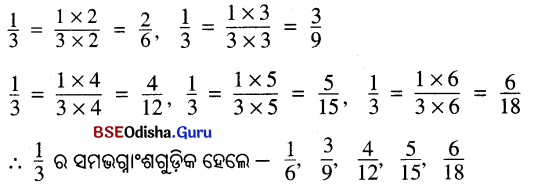
![]()
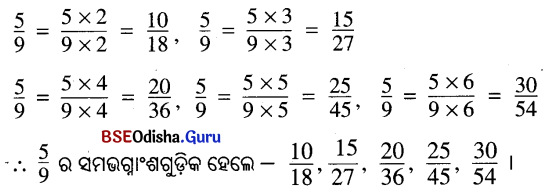
![]()


